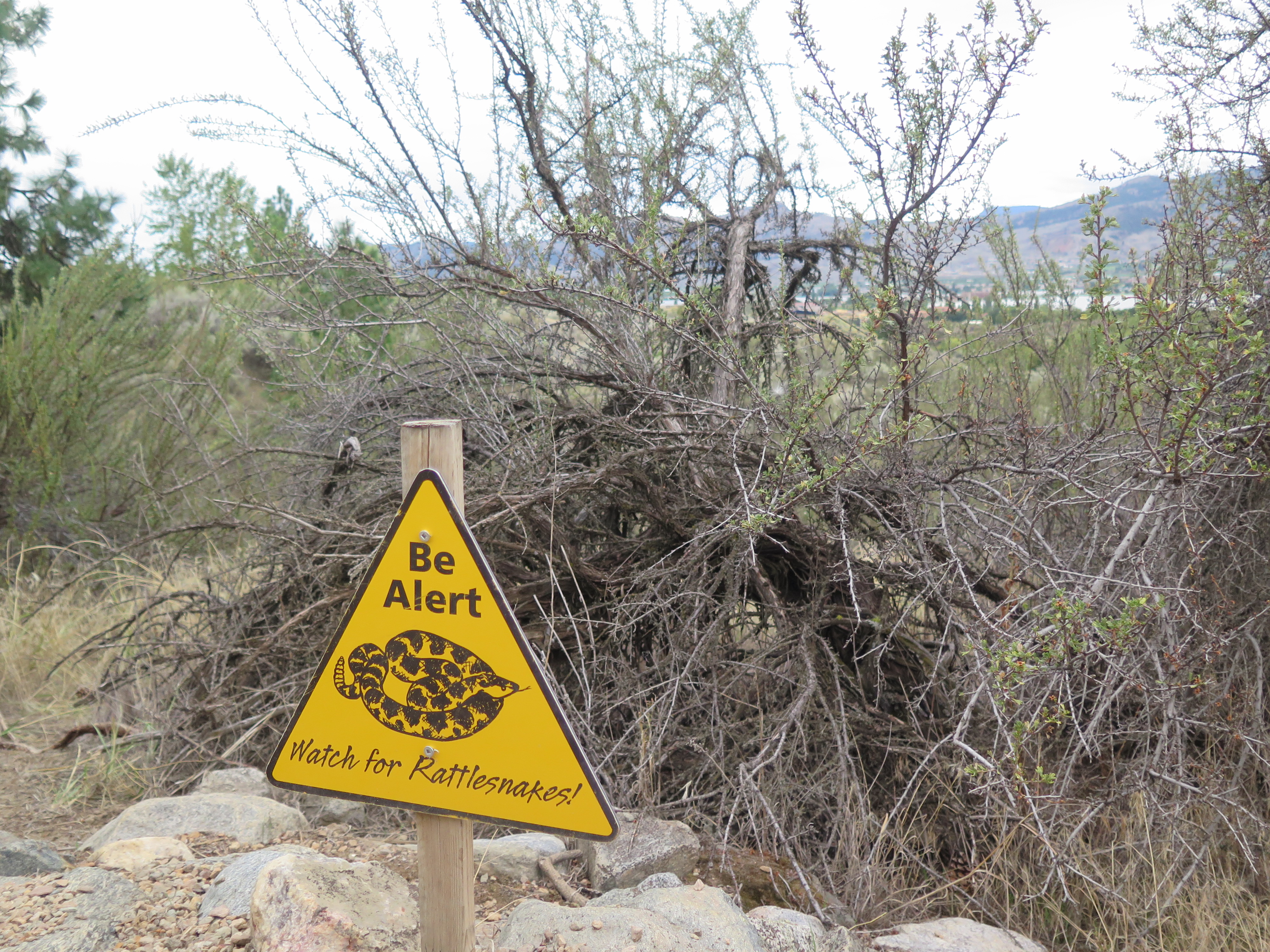With only a few hours driving to do to get to Rossland, we decided to spend the morning in Osoyoos. The area is known as a dry, shrub-grassland is one of Canada’s most fragile and endangered ecosystems. Given just over ten inches of rain and snow a year, it is classified as desert. Given that we are driving through the rockies and mountain ranges, this seems completely out of place, but it is a unique ecosystem. In fact our drive is west-east and this takes us through the Rockies (which run north-south) and into the Okanagan valley – the fruit-growing centre of Canada. To find out more about the area, we visited the desert centre in Osoyoos. This is owned by a charity which aims to conserve the antelope brush ecosystem and owns a 67 acre site just outside town.
The site has a 1.5km boardwalk and we got there just in time for a guided tour. This was the best way to see it as the guide pointed out lots of little things which we wouldn’t have noticed on our own. The main plants are sagebrush and antelope brush. Both are well adapted to the desert environment and sagebrush has light-coloured ‘fuzzy’ leaves which help reflect the sunlight to prevent moisture loss. Tiny hairs on the plant trap the moisture and protect the plant from drying out.
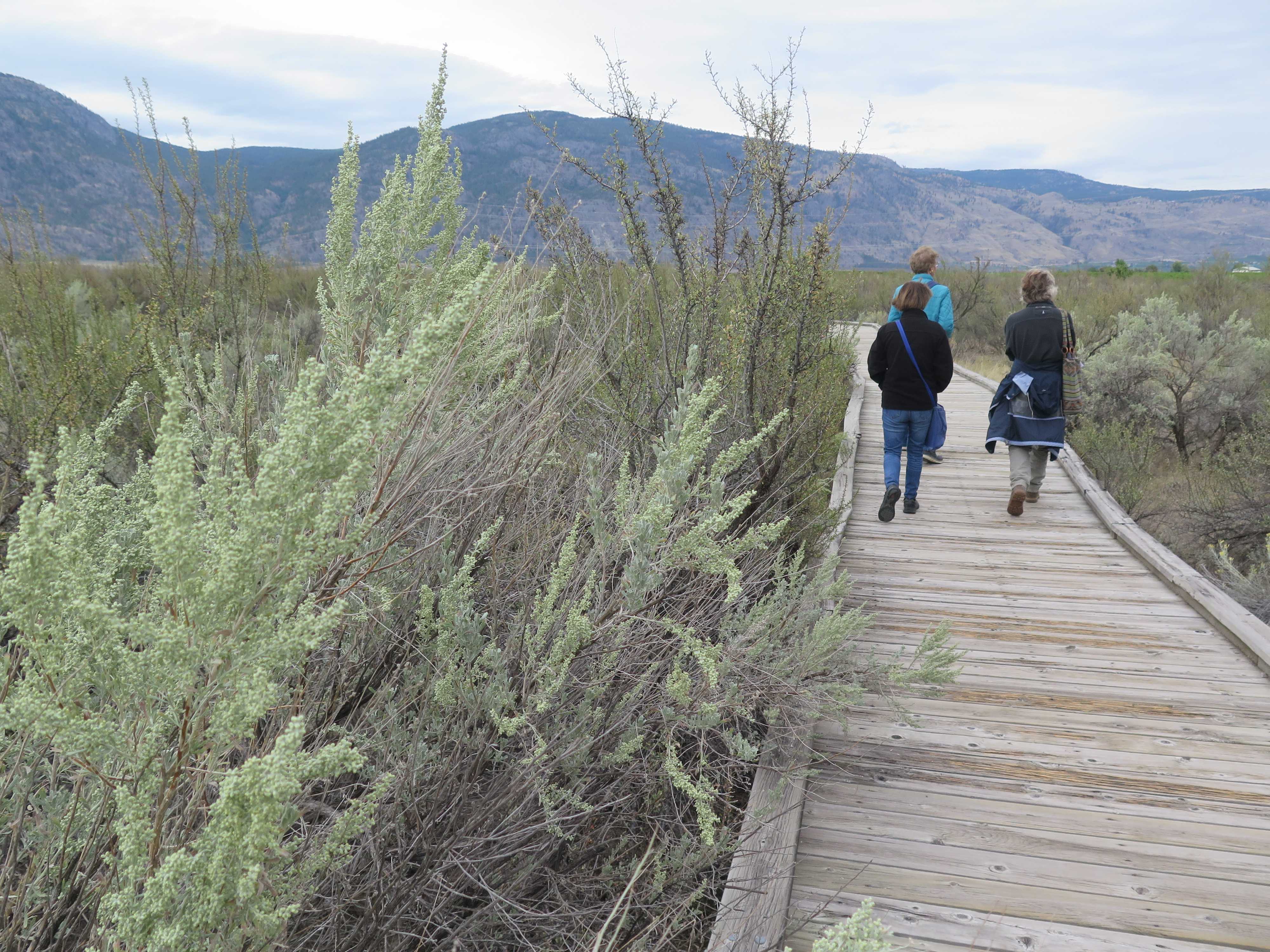
As well as the various different species, the site is a unique habitat for a range of wildlife. Snakes (particularly the wonderfully named gopher snake) are common, though of course we didn’t see one (which was fine …). Apparently though there are no rattlesnakes on this side of the valley, but they are very common on the other side of the lake. There were also, unusually for a desert environment, amphibians. A small pond on the side is home to the Great Basin spadefoot. These are tiny amphibians which only live in dry grasslands and have spade-like digging pads on the hind legs to enable them to bury themselves in the sand when the water evaporates. They hibernate there until there is rain when they emerge and breed.
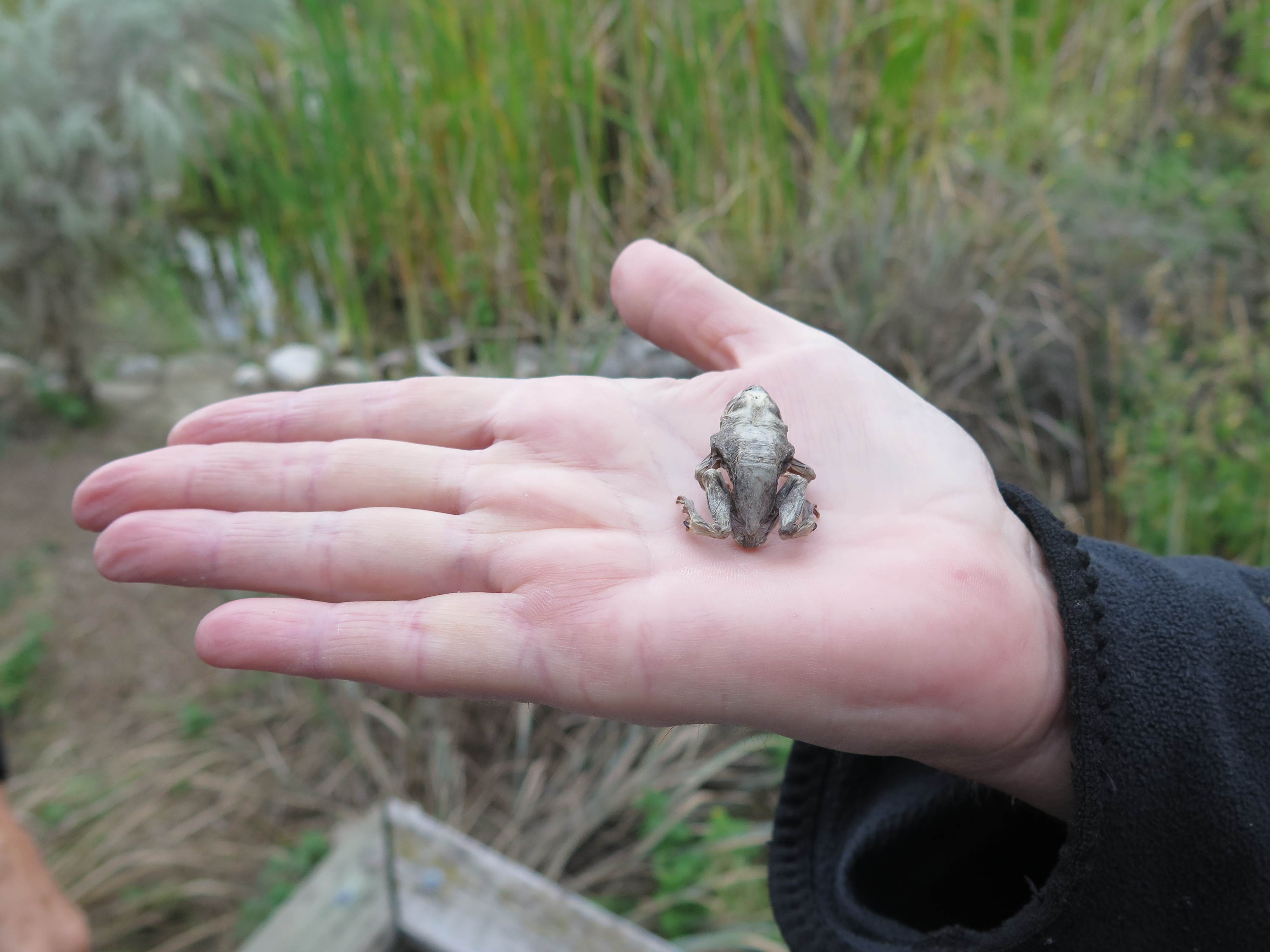
The reserve is also home to rabbits, deer and the various predators like coyote. We were lucky to see some deer crossing the boardwalk in front of us and lucky not to see any coyote!
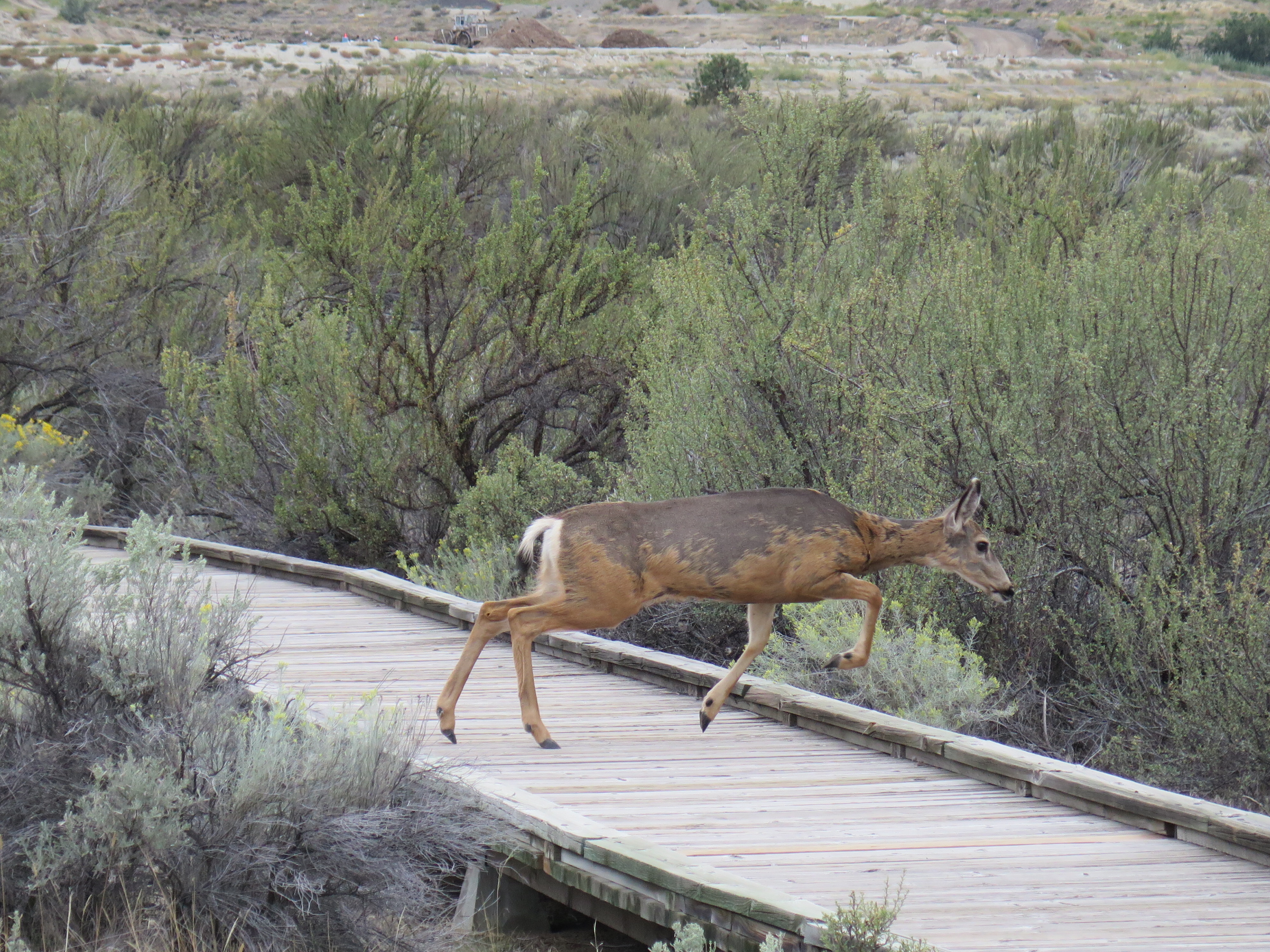
From the desert centre, we headed to the other side of the valley to the Nk’Mip desert cultural centre. This is owned and operated by the Osoyoos Indian Band and helps give an insight into the local First Nations people with exhibitions and another desert walk. One surprise was that they used to build Kilstn – a kind of sauna used for physical and spiritual cleansing. The dome-shaped tent was build and then hot rocks put inside and water poured over them – exactly like a modern-day sauna.
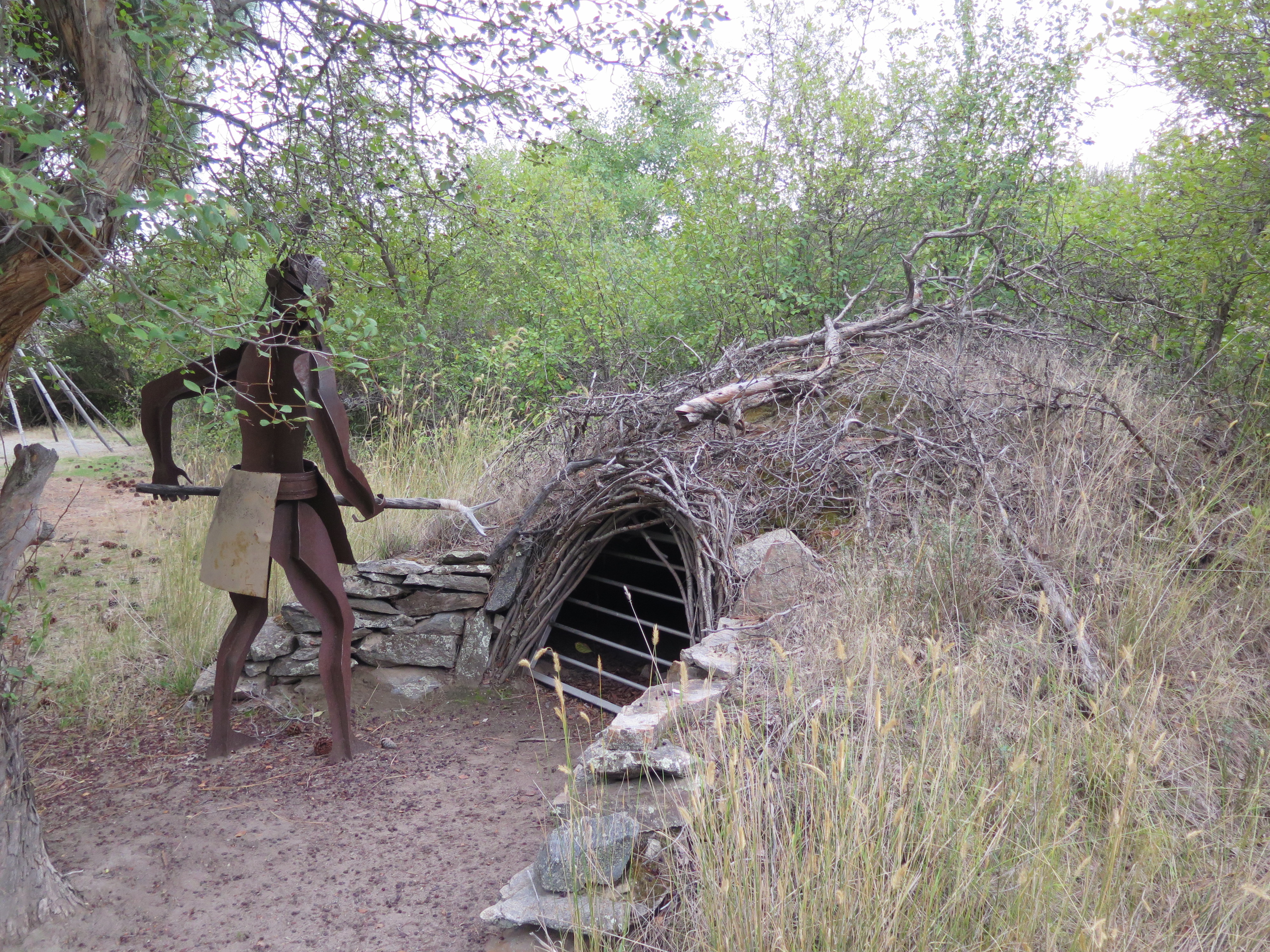
We did the loop trail around the park, but despite all the warnings about rattlesnakes, we never saw any. From there we drove on to Rossland – across the Okanagan valley and into the Monashee mountain range where Rossland is located.
We had a lovely evening gatecrashing a birthday party of friends of Sue’s – a pot-luck supper. The pot luck element is that everyone brings a dish, so you don’t know what you will get to eat. An eccles cake birthday cake though made us feel totally at home!
